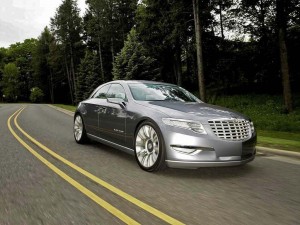
The look of the 2007 Chrysler Nassau concept will influence the next-generation midsize sedan, but the 2012 Chrysler Nassau won't be its clone.
The “new” Chrysler is likely to look but sound a lot different from the old version of the automaker. Indications of the grand transformation conceived by Chrysler’s new and secretive CEO Sergio Marchionne will start coming into view later this year.
In the months to come, the market will get its first look at new versions of both the Jeep Grand Cherokee, as well as the Chrysler Sebring. The SUV will be new almost from the ground up, but while the revised version of the midsize sedan is largely a re-skinning, it will also get a brand new name: Nassau.
The move is a critical one, say analysts, in cutting the company’s ties to failed past products. Once a strong part of the Chrysler line-up, the most recent version of the Sebring was a market disaster, an ill-fated execution that emerged from a now-abandoned partnership with the struggling Japanese maker, Mitsubishi Motors.
Sebring is also seen as one of the notable examples of the failure of Chrysler’s decade-long tie-up to Germany’s Daimler. As originally conceived, the U.S. brand was going to move up-market, a relationship to Mercedes-Benz that might be considered similar to the way General Motors positions the Buick and Cadillac brands.
But, in the end, cut corners crippled that strategy, especially on the U.S. side of what was then DaimlerChrysler AG. And the Sebring was the archetypal example of what went wrong. The exterior styling appeared old even as it first hit market. The vehicle’s interior was a visibly cheap execution. And the car, overall, suffered from a myriad of quality problems, earning it low ratings from J.D. Power and Associates, and a pan from influential Consumer Reports magazine.
That was particularly troubling in the critical midsize passenger car market. “If you look at the Sebring and benchmark it against the competition, it’s not where it needs to be,” admits CEO Marchionne.
While Chrysler has kept a tight lid on details about the 2011 Sebring replacement, it should not be confused with the Nassau concept the company debuted three years ago. Codenamed Delta, some sources indicate the production Nassau will feature a more sweeping shape, with a relatively small decklid, in line with the next-generation Chrysler 300, the maker’s flagship sedan.
Also expect to see a new Pentastar V6 offered on the Nassau, along with the existing 2.4-liter inline-four powerplant.
The look of the new Chrysler Nassau was largely locked down before Fiat took control of the U.S. maker after its bankruptcy, last year, but the name and marketing strategy bear Marchionne’s stamp of approval. The new sedan is likely to not only be sold here in the U.S., but abroad. Expanding Chrysler’s global footprint is a key goal for the maker’s new parents.
That would probably mean that a version of the Nassau will eventually be introduced to Europe, and perhaps other parts of the world, with a Lancia badge. Going forward, Chrysler and Lancia will be paired closely, the badge of choice depending on the market.
